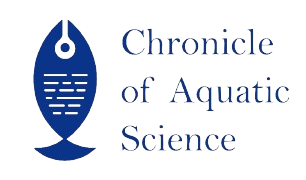- 919088951040 call us
- chronicleofaquaticscience@gmail.com Mail us
CoAS_V1IS2_11
Popular Article
NON-PROTEIN NITROGENOUS (NPN) COMPOUNDS IN SEAFOOD
Domendra Dhruve, Rachna Gulati and Ajeet Soni
Abstract
Non-protein nitrogenous (NPN) compounds are a diverse group of nitrogen containing compounds that play a crucial role in the chemistry and nutritional composition of seafood. Seafood’s are known for their high protein content, but NPN compounds also contribute significantly to their overall nutritional value and sensory characteristics. This article provides an overview of the types, sources, and roles of NPN compounds in seafood, highlighting their impact on human health and the seafood industry. Various NPN compounds can be found in seafood, including free amino acids, nucleotides, urea, creatine, and trimethylamine oxide (TMAO). These compounds originate from endogenous sources within the fish, as well as exogenous sources such as their diet and the surrounding aquatic environment. NPN compounds contribute to the flavor, aroma, and overall sensory quality of seafood, enhancing their palatability and consumer acceptance. From a nutritional perspective, NPN compounds in seafood offer several health benefits. Free amino acids derived from protein breakdown are readily absorbed and utilized by the human body as building blocks for various physiological processes. Nucleotides play essential roles in energy metabolism, cellular signaling, and immune function. TMAO acts as an osmolyte and an antioxidant, protecting fish tissues against osmotic stress and oxidative damage. However, NPN compounds in seafood can also pose challenges for food safety and quality. High levels of certain NPN compounds, such as histamine, can lead to allergic reactions and foodborne illnesses in susceptible individuals. Moreover, the breakdown of proteinaceous compounds during storage and processing can result in the formation of undesirable compounds, affecting the sensory attributes and shelf life of seafood products.
Keywords
Peptides, Nucleotides, Seafood, Urea, TMAO
References
Gopakumar k. textbook of Fish Processing Technology. Biochemical composition of fish, published by Mr. Arvinda Chakravarty, Director, Indian Council of Agricultural research , new Delhi, 110 008.
Balachandran k.k. Post-harvest Technology of Fish and Fish Products. Biochemistry and Nutrition.
Finne, G. (1992) Non-protein nitrogen compounds in fish and shellfish. In Advances in Seafood Biochemistry: Composition and Quality(eds. Flick, G.J., Jr. and Martin, R.E.), Technomic Pub. Co. Inc., Lancaster and Basel, pp. 393–401.
Ikeda, S. (1979) Other organic components and inorganic components. In Advances in Fish Science and Technology (ed. Connell,J.J.) Fishing News Books, Surre
- Published online
- 31st July, 2023
How to Cite the Article
Dhruve et al., (2023) NONPROTEIN NITROGENOUS (NPN) COMPOUNDS IN SEAFOODS. Chronicle of Aquatic Science 1(2): 89-94
Copyright
This is an open-access article distributed under the terms of the Creative Commons Attribution License (CC BY). The use, distribution or reproduction in other forums is permitted, provided the original author(s) and the copyright owner(s) are credited and that the original publication in this journal is cited, in accordance with accepted academic practice. No use, distribution or reproduction is permitted which does not comply with these terms.



